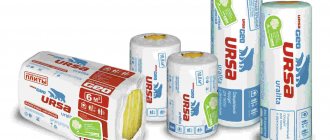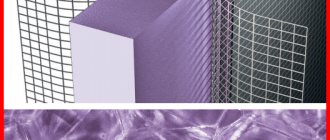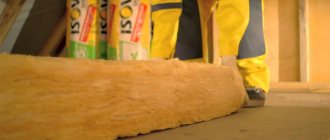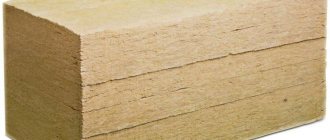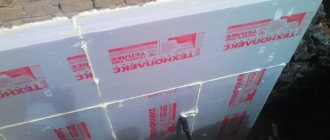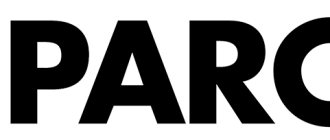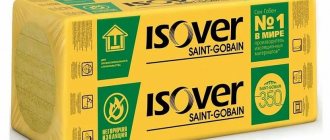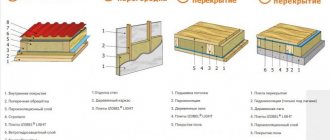Izolon is considered an almost universal material used for heat, steam and waterproofing. During the production process, the ISO standard is necessarily taken into account. Finished products are used in almost all industrial sectors, which is possible due to their excellent performance characteristics.
Features and types
Izolon is an insulating material created in accordance with special technology. The main raw material is foamed polyethylene, which, under high pressure, obtains improved performance properties. Sometimes izolon is additionally covered with a layer of aluminum foil. This material has excellent elasticity and thermal insulation properties , thanks to which the product can be used in any room.
The use of special technology can significantly extend the service life of the finished material. 2 varieties of isolon on sale .
- PPE, that is, cross-linked material. Its structure resembles polyethylene, and it does not change during heat treatment. The product does not pose a danger to the environment or human health. The slight specific smell disappears in literally 2–3 weeks.
- NPE or uncrosslinked material. It is characterized by its unbound molecular structure. Accordingly, the products are more resistant to aggressive environments. Overall this material is more durable. It also does not require special care.
Specifications and Benefits
When purchasing such an insulating material, you need to remember that its properties will differ depending on the type.
PPE:
- thickness from 1 to 50 mm;
- sound absorption about 68%!;(MISSING)
- water absorption up to 1%!;(MISSING)
- density 30–200 kg/m³;
- reflection level 95–97%!;(MISSING)
- permissible temperature from -60˚С to +75˚С.
NPE:
- thickness from 1 to 16 mm;
- sound absorption 3–13%!;(MISSING)
- water absorption about 0.2%!;(MISSING)
- density 19–35 kg/m³;
- permissible temperature from -80˚С to +80˚С.
The service life of both varieties is approximately 90 years . At the same time, isolon tolerates negative external factors well, including chemicals and precipitation.
The main advantages include:
- high quality;
- environmental friendliness;
- non-exposure to UV rays;
- minimum weight, due to which the walls and foundation will not suffer from the load during installation.
It is important to note the thermal insulation properties. The main feature is the low thermal conductivity coefficient .
All cells of the material are closed, which means the surface will be protected from steam and moisture. Although the insulation is quite thin, it provides excellent sound protection. Most insulators are not used in various fields due to chemical activity, which cannot be said about isolon. It does not react with petroleum, oils and various chemical compounds .
The only drawback of the product is its high cost, as well as the need for careful transportation and proper storage. In addition, the product should be installed carefully so as not to damage its structure.
Areas of use
Isolon is very common in the modern building materials market. This popularity is explained by its good performance properties , which affects the scope of applications. Today, insulation is widely used in the following industries:
- medical industry;
- arrangement of housing and industrial premises, namely insulation of foundations, roofs, floors, production shops, utility rooms and warehouses;
- repair and production of vehicles;
- production of thermal blankets and various packaging;
- assembly of refrigeration equipment, air conditioners, heating systems;
- construction of shops, baths and shopping pavilions;
- creation of arch supports, insoles and other inserts for shoes.
Laying isolon
As mentioned earlier, isolon is easy to install. Accordingly, no special tool is required. To complete the work, it is enough to prepare the glue. You will also need nails or a construction stapler. During work, it is necessary to seal the seams. Aluminum tape is used for this purpose. It will help create a truly uniform reflective surface . After completion of the work, the insulation is painted or covered with a layer of polymer film.
It is important to remember the ventilation that walls need.
If you perform internal insulation, the surface will begin to deteriorate. This can be avoided by ensuring there is a ventilation gap .
Izolon is the best choice for insulating various structures. This material is quite expensive, but it will last for 90 years, protecting the room from heat loss. At the same time, the insulation does not have a negative impact on human health.
Izolon
Isolon is a polyethylene foam complex insulation with a wide range of capabilities.
It has excellent sound-absorbing properties, high heat, hydro and vapor barrier characteristics. Izolon technical characteristics and properties. Available uncoated and laminated on one or both sides with aluminum foil, which is protected by polypropylene film, Izolon foil insulation acquires the qualities of reflective thermal insulation. Ideal for both keeping warm and cold.
The material is produced by foaming polyethylene using hydrocarbons. The output is an elastic elastic fabric of a porous structure with closed cells.
Due to its low price, good insulation and strength properties, and ease of installation, it is widely used in construction and other industries.
Izolon, obtained in different ways and therefore differing in properties, is divided into two types:
- cross-linked – Izolon PPE (polyethylene foam);
- uncrosslinked – Izolon NPE (uncrosslinked polyethylene foam).
Izolon PPE
Production using this technology involves cross-linking (cross-linking) of foamed polyethylene molecules and the formation of a cross-mesh structure. Thanks to cross-linking, the cell walls become resistant to loads, retain strength without losing elasticity. Such products have a long service life and high resistance to destruction.
The creation of transverse intermolecular bonds of foam can occur by chemical and physical (radiation) methods.
In a chemical process, initiator substances (porophores) participate in the construction of the structure. With radiation, cross-linking is carried out by a beam of energy.
Properties
Izolon PPE has a smooth surface, elastic, durable microporous base with a cell size of less than 1 mm. The material boasts excellent elasticity and wrinkle resistance, and after compression it completely restores its shape.
Has the following qualities:
- Effective thermal insulation. Retains heat better than mineral insulation. Operates over a wide temperature range.
- Low moisture and vapor permeability. It practically does not absorb water; the closed-cell structure filled with air creates a floating effect.
- Significant noise absorption. It has anti-resonance soundproofing characteristics and dampens impact noise.
- Chemical inertness. Resistant to petroleum products, gasoline, microorganisms, and atmospheric influences. Not afraid of UV rays.
- Elasticity and light weight. One of the lightest insulation materials, soft and durable at the same time. Very convenient for installation, quick and easy to process.
- Durability. The service life, while maintaining all operational characteristics, reaches 80 years.
Izolon technical characteristics
Technical parameters may vary depending on the thickness of the material, its type and density.
| Density | 25-200 kg/m3 |
| Thermal conductivity at 25°C, no more | 0.032 W/m*K |
| Water absorption by volume, no more | 1%! |
| Vapor permeability coefficient | 0.001 mg(m*h*Pa) |
| Specific heat | 1.35 W(m*°C) |
| Flammability group | G1-G4 |
| Ultimate strength, compression by 25%! | 0.035 mPa |
| Shrinkage when heated to 70°C, in 22 hours | 1.45%!p(MISSING)longitudinal size, 0.75%!p(MISSING)transverse size |
| Operating temperature range | -60°C to 75°C |
| Sound absorption coefficient at frequency 250 Hz and 6000 Hz, not less | 7%! and (MISSING) 60%! |
| Level of improvement of sound insulation against impact noise (Lw)³ 18 dB | for seamless cement floors 50mm |
We recommend: Antifungal primer - types and selection rules
Application
The product is mainly used in construction, mechanical engineering, production of refrigeration units, and consumer goods.
Serves for thermal insulation of walls, partitions, and roofs of buildings. It is used as a sound absorber in the construction of floors and inter-concrete floors. As thermal and sound insulation, it protects ventilation pipes and air conditioning systems, and underfloor heating in systems.
Taking advantage of its buoyancy properties, it is used to fill flotation devices and life jackets.
Izolon NPE
This type of product is obtained using a simplified technology, when the polymer is foamed with gas mixtures under pressure. The expanding gas forms closed pores, where it partially remains. The gas-foamed material has a slightly wavy surface, the base consists of large cells.
Since the structure lacks cross-links between molecules, this insulation is not so strong and elastic. It wrinkles easily, loses elasticity and is prone to destruction of pore walls under stress and aging.
Many technical characteristics for this type of isolon have not been established due to their insignificance, since it is characterized by low thermal parameters, inability to bear mechanical loads and insufficient durability.
Application
Its density of 25-30 kg/m3 limits the use of the product within the low requirements of insulation areas. Often used as packaging and cushioning material.
Video
Source: constructionlinfo.ru
Advantages and disadvantages
This material attracts the attention of consumers with its advantages.
Thanks to them, a wide scope of its application is ensured . The most significant are:
- Elasticity of the material.
- High thermal insulation properties. A 1 cm thick layer of thermal insulation from this material is identical to 15 cm of brickwork or a 1.5 cm thick layer of mineral wool.
- Excellent sound insulation.
- High moisture resistance.
- Low degree of vapor permeability.
- Easy installation procedure. There is no insulation waste during the work.
- The material is resistant to ultraviolet radiation and atmospheric factors. It can be excellently used for performing external insulation work on buildings.
- Ease of processing. In order to cut sheets into blanks of the required size, no special tools are required. Just use a sharp knife.
- Resistant to chemicals. The insulation does not change its properties under the influence of petroleum products and industrial oils.
- It can be used in conjunction with other building materials.
- Izolon is an environmentally friendly solution. During operation of the layer, no harmful substances or allergic compounds are released from this insulation into the atmosphere.
- The production of heat insulator is absolutely harmless to the environment. Its manufacturing technology does not involve the use of freon or other harmful components.
- It is light in weight, so it does not create additional load on the structure.
- The service life can reach up to 90 years.
Its disadvantages include high cost
In addition, extreme care must be taken when transporting the material and during installation work. If isolon is used to insulate walls, then the surface can only be painted or wallpapered
It is unacceptable to lay plaster, since in this case there is a risk of damage to the insulation. If the technology was violated during installation, this can lead to its rapid destruction.
Advantages and disadvantages
Advantages of the material:
- high heat and sound insulation properties of isolon PPE;
- moisture resistance: foil-coated isolon does not require additional waterproofing;
- environmentally friendly - does not contain freon, phenol, formaldehyde;
- hypoallergenic;
- impact resistance;
- due to elasticity – high resistance to breaking loads;
- ease of processing and installation. Insulation can be easily done with your own hands, without the involvement of professionals and special equipment;
- resistance to gasoline, petroleum products, oils;
- UV resistance. Open structures can be processed;
- combines with any wall materials: wood, concrete, plasterboard, stone, plaster, plastic, metal;
- bactericidal and fungicidal (antifungal) properties;
- durability - at least 80 years without loss of properties;
- light weight;
- a wide range of sizes, characteristics, colors.
Foil material
Disadvantages:
- poor vapor permeability. When insulating interior spaces and under-roof spaces with isolon, it is necessary to take care of ventilation. Poor air exchange leads to the accumulation of condensate, which causes rotting/corrosion of materials, the development of fungus on concrete and wooden surfaces, and deterioration of the microclimate in the house. The recommended ventilation gap width for interior work is 2-3 cm, i.e. the usable area of the room is reduced by this amount;
- instability to aggressive chemical compounds;
- instability to damage from sharp objects, protective lining is required;
- combustion toxicity;
- Due to its small thickness, Isolon insulation cannot always be used for full insulation. The exception is foil types;
- the price is on average higher than that of other popular insulation materials - basalt wool, expanded polystyrene.
How to choose material
The choice depends on the purpose. Recommended thickness:
- substrate for laminate – 2-3 millimeters;
- thermal insulation and sound insulation of interfloor ceilings, floor insulation - 0.8-1 cm;
- for laying heated floors – 2-4 millimeters;
- insulation of underground pipelines - 1.5-4.5 centimeters;
- thermal insulation + waterproofing of tunnels – 1-2 centimeters.
Different types of material are used for different purposes:
- Izolon Tape - for gluing cracks, for sealing window niches and doorways as heat/sound insulation and shock protection;
- Izolon Block - for internal thermal insulation of premises, external thermal insulation of seasonal auxiliary buildings, interfloor ceilings, flat and pitched roofs, foundations;
- For thermal insulation of heating mains and other pipelines, foil-coated isolon is preferable, the performance characteristics of which are an order of magnitude higher due to the reflective layer.
Average cost:
- Izolon Pressed block, meter by meter, thickness 5 cm, costs about 1 thousand rubles per piece;
- Isolon 500 sheet, two meter by two, 5 cm – 1 thousand rubles;
- isolon 500, roll 60 meters, width one and a half meters - 13 thousand rubles;
- the price of a 50-meter roll of foil isolon is 12 thousand rubles;
- self-adhesive Izolon Tape, roll 20 meters - about 3 thousand rubles.
Sound absorption
ISOLON® has significant anti-resonance sound-absorbing characteristics, which sharply distinguishes it from a number of thermal insulation materials. It is standardly used by construction companies as a sound insulator when installing “floating floors”. A reduction in the level of parasitic noise occurs already with the use of Isolon 500 and Isolon 300 with a thickness of 5 mm. under the screed - the sound insulation of the interfloor ceiling from impact noise is improved by 18 dB. Recommended as a high-quality underlay for laminated parquet and parquet boards. The soundproofing properties of NPE are a myth. Many building materials slightly dampen noise, but are not declared, are not recommended and will never be used as sound insulation. NPE is used as a substrate for laminated parquet not as a sound insulator, but as a material that levels out an uneven floor base. NPE is not a soundproofing material due to its low density. The fragile cells of NPE are destroyed under loads and become thinner in places to the thickness of a polyethylene film.
What is polyethylene foam: characteristics
There are many types of PPE on the construction market. Brands of isolon vary depending on the method of its manufacture and execution. It can be square or rectangular sheets, the thickness of which varies from 15 to 100 mm. Such plates are characterized by elasticity and softness.
One or two layers of foil coating can be added to the isolon composition. It can be thin aluminum or reinforced metallized film. During the lamination process, an outer reflective layer is attached to the PPE. The adhesion of the materials is very reliable and durable, which indicates the high quality of the material.
Technical characteristics of isolon:
- Diverse range of operation;
- Thermal conductivity;
- Vapor tightness;
- Water resistance;
- Strength;
- Soundproof.
Izolon PPE has unique properties, for example, foaming ratio. Thanks to the first two numbers on the marking, you can determine the foaming ratio, then the thickness of the material
When purchasing, it is important to pay attention to what the material will be used for. For the substrate under the laminate, choose a thinner isolon, for heat and vapor barrier - a denser one
Characteristics, dimensions, forms of release
Technical characteristics of isolon:
- density - from 26 to 45 kilograms per cubic meter;
- reflective effect of foil – 97%;
- water absorption – maximum 0.1%;
- vapor permeability – 0.001 mg/mchPa;
- flammability - from G2 to G4 according to GOST 30244;
- compressive strength - from 0.035 to 0.33 megapascals (depending on the brand);
- stretching – 130-250%;
- specific heat capacity – from 1.8 to 1.95 kilojoule/kgf;
- thermal conductivity coefficient – 0.031 W/mK;
- operating temperature – from -60 to +125 degrees;
- sound insulation – noise reduction by 20 decibels is possible (depending on density). Maximum sound absorption – 68%.
Dimensions:
- width – from 55 cm to 2 meters;
- length – 2-200 meters;
- thickness – from 1 mm to 5 cm;
- the dimensions of the slabs are 1 by 1.1 and 2 by 1.4 meters.
Balcony insulation
Vacation forms:
- square or rectangular sheets from 1.5 to 10 cm thick;
- rolls. Standard width is 80-150 cm, length 10-200 meters, thickness from 2 mm to a centimeter;
- Izolon Tape – self-adhesive tape in rolls on a cardboard reel, thickness from 8 mm to a centimeter;
- Izolon Block - slabs meter by meter, thickness 5 mm and centimeter.
Technical characteristics of isolon
At this stage of technical progress, two types of isolon are distinguished: foil PPE and foil NPE. The first type is polyethylene foam, the second is non-crosslinked polyethylene foam. PPE is produced by vertical foaming, for which air is used. The structure of such an isolon is cross-linked.
The structure of NPE is characterized by the presence of gas bubbles with evenly spaced closed pores. Izolon can have different features and characteristics, which depend on the substance used for their manufacture. The material can have different thickness and density.
Characteristics of isolon:
- Thermal conductivity. It has excellent thermal insulation characteristics. It has a low thermal conductivity coefficient.
- Hydroscopicity. It has a low moisture absorption coefficient. It is waterproof and vapor proof.
- Elasticity. Does not change its flexibility when temperature changes. The material will also not break if bent.
- Durability. The material does not lose its properties after 80-90 years.
This type of insulation is resistant to various types of weather conditions. This is an environmentally friendly material, completely safe for use in residential areas. Isolon does not release toxic substances when ignited, but simply breaks down into its constituent components (water and carbon dioxide).
Tips and tricks
When choosing isolon, you should adhere to the following recommendations:
The cost of thermal insulation products does not always determine its quality, so you should pay attention to the manufacturer of the product, as well as its technical characteristics, in order to choose a product that is ideal for insulating a particular surface. Installation and fixation of seams cannot be performed with ordinary tape; for such purposes there are specialized adhesive aluminum tapes
- During the installation process, do not forget about the ventilation layer, which must be formed near the walls.
- Products, especially products with a foil layer, require compliance with the specified storage conditions, as well as care during transportation of the goods.
- Violations made during the installation of heat-insulating material can damage the integrity and structure of the isolon, as a result - the product will lose its properties.
A very important parameter of isolon is the thickness of the products. It is this indicator that determines the scope of product operation.
To help make the right choice, manufacturers classify products based on thickness and area of installation.
- To carry out work on thermal insulation of pipes located directly underground, it is necessary to use PPE with a thickness of 15 to 45 mm with a foil layer for work.
- Sound insulation in multi-storey buildings between floors will have a high level of quality if you use isolon of 8-10 mm thickness. Such material will be enough to reduce noise from the movement of people living above, as well as to eliminate the audibility of low-volume music from neighbors. But for buildings where the top floor, for example, will be used as a gym, you need to purchase products with greater thickness.
- Floor coverings, for example, laminate, can be insulated with high-quality 3-5 mm products. For a “warm floor” system, preference should be given to products with a minimum thickness. Based on the type of floor screed, it is recommended to use different types of isolon: for a dry screed - foil material, for a wet screed - you need to lay products with a metallized layer.
- Thermal insulation of wood and concrete bases is carried out with products with a product thickness of up to 10 mm.
ABOUT THE MATERIAL
ISOLON NPE is environmentally friendly polyethylene, foamed using a special technology using the latest equipment that allows for multi-stage quality control. ISOLON NPE is a sheet elastic closed-cell material with low apparent density based on food-grade high-density polyethylene, a foaming agent and technological additives. In addition to the main components, NPE grade isolon may contain coloring pigments, fire extinguishing additives, etc. ISOLON NPE-L is produced by heating sheets of Izolon NPE and joining them under pressure. ISOLON NPE is manufactured in the form of a continuous web, wound into a roll or in separate sheets.
| TECHNICAL CHARACTERISTICS OF ISOLON NPE | |
| Apparent density | 26-45 kg/cub.m. |
| Application temperature | from –80°С to +80°С |
| Thermal conductivity | 0.040 W/m.K |
| Specific heat | 1.95 kJ/(kg °C) |
| Water absorption by volume | no more than 0.2% |
| Vapor permeability | 0.001 mg/(m.h.Pa) |
| Sound absorption | From 3% at 125 Hz to 13% at 4000 Hz |
| Compressive stress (25%) | Not less than 0.015 MPa |
| Relative permanent deformation under compression (25%) | No more than 20% |
| Flammability group | G2 - moderately flammable |
| Flammability group | B2 - moderately flammable |
| Smoke generation group | D3 – high smoke-generating ability |
| Combustion product toxicity group | T3 – highly dangerous |
| Electrostatic field strength on the surface of the isolon | 15 kV/m |
Manufactured in accordance with 2244-020-00203476-2004 The quality and complete safety of the ISOLON NPE material is confirmed by all necessary certificates
| Fire safety certificate |
| Certificate of compliance with Russian standards |
| Hygienic certificate, conclusion of the SES of Ukraine |
| Technical certificate of the State Construction Committee of the Russian Federation |
| Certificate of type approval of the Russian Maritime Register of Shipping |
Installation technology of thermal insulation material
Self-installation of isolon does not require a lot of knowledge, however, a certain algorithm of actions still needs to be followed. In order for the material to perform its intended function, the installation of heat-insulating material must be carried out in the following sequence:
- The surface of the walls is being prepared. Removes old coating. Primed. Polystyrene boards of sufficient thickness are installed.
- Sheets of isolon of suitable thickness are cut to size and attached to the wall. To fix them, an adhesive composition or a stapler is used. To avoid damaging the insulating layer, the sheets are laid end-to-end during installation.
- The joints are glued with mounting tape 50 mm thick. Aluminum tape is used to seal the seams.
- A frame is mounted for fastening plasterboard sheets. The profile depth should be 20 – 50 mm.
- Plasterboard sheets are installed. The final finishing of the walls is in progress.
When insulating balcony structures, it is important to prevent the occurrence of condensation. That is why it is necessary to leave ventilation gaps
Izolon foil: characteristics
Today, a new type of insulation materials is presented on the market - foil-coated isolon. It has reflective properties that can stop heat flow. Izolon meets all GOST standards: it is safe for use in residential premises.
Reflective insulation works on the principle of transferring heat from a hot surface to a cold one. The process is based on the following physical characteristics: thermal conductivity, convection, thermal radiation. Thanks to the use of foil-coated isolon, it is possible to minimize heat loss.
Where is the material used:
- Food industry;
- Oil refining industry;
- Gas production industry;
- Heating systems;
- Water supply;
- Ventilation;
- Conditioning.
Adhesive PPE is of high quality. For thermal insulation, it is best to use metalized isolon, which is adhesive to the surface. Before gluing the material, you should carefully study the instructions. Izolontape 3010 has excellent characteristics. There are black, white and colored foil Isolon. If you are not satisfied with the color of the material, you can always paint it in the desired shade.
Acoustic properties of polyethylene foam
| PPE, according to GOST 23124: sound absorption coefficient, not less than: | NPE | |||
| Frequency Hz) | PPE-L 3010 | PPE-L 3015 | Degree of improvement sound insulation from shock noise (Lw) 18 dB – for seamless cement floors 50mm. | no data. |
| 250 | 7% | 9% | ||
| 500 | 15% | 17% | ||
| 1000 | 24% | 27% | ||
| 2000 | 38% | 43% | ||
| 4000 | 50% | 54% | ||
| 6000 | 60% | 68% | ||
Where is isolon used?
In repair and construction:
- Heat and sound insulation of external and internal surfaces of buildings, foundations and plinths, application in premises of any purpose;
- Heat and vapor insulation of objects with high humidity;
- Thermal insulation of pipe routes.
Areas of application of isolon in private construction
In the automotive industry:
- For insulation and reduction of noise and vibrations of the body;
- For protection against corrosion.
More:
- In medicine: used as packaging for fragile items, for orthopedic shoes and inserts, for the manufacture of thermal blankets;
- In the production of climate control units;
- In the manufacture of workwear.
PPE for food packaging
https://youtube.com/watch?v=RgKvM3-JFRU
How isolon is made:
- Granular polyethylene, foaming agent and reagents are mixed in the tank;
- The mixture is heated until melting, and products of a certain shape are formed from the soft mass;
- Molded products are exposed to high temperatures in the oven, as a result of which foaming agent foams in the products, and air pores appear in the material;
- The last stage is the application of a layer of aluminum foil by lamination.
Moisture absorption
This is the most important characteristic of a heat insulator. Traditional thermal insulators, such as mineral wool of all types (both glass wool and basalt insulation) and PSBS foam are hygroscopic, they absorb water, and the thermal insulation properties deteriorate. To prevent moisture saturation, a vapor barrier is used, which entails additional costs. Isolon 500 and Isolon 300 are excellent building materials, virtually absorbing no water (less than 1% of the total volume in 94 hours), they have no capillary moisture absorption, especially Isolon 500. They are even used as buoyancy fillers for life jackets, since remain waterproof even when immersed for 7 days under a layer of water of 1.25 m. Izolon PPE is used to make solid-wound floating floats for pressure pipelines of dredgers operating on the principle of a dredger and floating booms used even at sea, since Izolon is resistant to both sea water and diesel fuel. This is confirmed by the certificate of the Russian Maritime Register and technical specifications - Isolon 500 is recommended for use “as a floating material as a filler for life-saving and floating equipment.” NPE perfectly absorbs water, which has been proven in practice. In the autumn-winter period, during frosts and thaws, the moisture in the fragile cells tears them and the NPE gradually collapses. Due to the low density of gas-foamed polyethylene, the process of its destruction occurs quite quickly and fatally.
Recommendations for selection
To solve different problems it is necessary to use different types of insulation. To increase the thermal insulation properties of parquet flooring, you should choose a solution with a thickness of 25 mm. Isolon is often used for thermal insulation of wooden and concrete floors. For high-quality work, insulation with a thickness of 80 mm should be used.
To carry out measures to create high-quality sound insulation between floors, it is best to use 80 mm material. Such a layer will be quite enough to prevent you from hearing soft music and speech coming from your neighbors. In case of severe acoustic discomfort, to eliminate it, it is necessary to install a more powerful layer.
Izolon is a fairly effective solution for high-quality thermal insulation. With its help you can well insulate any room. Certain types of material provide protection from steam and temperature changes. Proper execution of the work allows you to count on a long service life of the installed layer. If violations were made during the procedure, the process of destruction of the thermal insulation layer will begin quite quickly. In this case, the installation of the isolon will have to be done again.
Floor insulation technologies
The technology for installing isolon on the floor has 2 options for carrying out the work.
Option 1 - insulation with isolon together with another insulation (most often mineral wool). Stages of work:
- Removing old flooring and cleaning the subfloor.
- The slats are attached to the cleaned base with dowels. This provides the necessary ventilation gap. The distance between the bars is 50-60 cm.
- Sheets of mineral wool are laid between the bars, and then sheets of isolon are laid on top under tension with a layer of foil in the middle of the room, attaching them to the slats with dowels.
Important: the joints of the isolon sheets must be placed on slats and taped with metallized tape, which ensures complete sealing of the sheets.
- Next, a second row of slats is mounted on the PPE isolon layer perpendicular to the first.
- At the next stage, sheets of plywood are laid on the slats, securing them with self-tapping screws.
- Finally, the floor covering is installed.
Option 2 - insulation with PPE isolon without the use of a second insulation . Stages of work:
- Isolon is laid directly on the wooden flooring.
- The sheets are laid end to end in one layer.
- The seams between the sheets are taped with metallized tape.
- Plywood sheets are placed on the layer of isolon PPE, screwing them with self-tapping screws.
- A floor covering (usually parquet or laminate) is installed on the plywood.
Advantages and disadvantages of the material
The list of advantages and benefits of isolon is impressive:
- The sound absorption of the material approaches 70%.
- Foamed polyethylene is safe for the environment and health.
- Low vapor permeability and water absorption (does not exceed 1%) make it possible to use isolon without waterproofing, which is mandatory for many insulation materials.
- Elasticity allows the material to be laid on structures with complex geometries. Thanks to its elasticity, the material is easily restored after mechanical stress and can be reused.
- Isolon, resistant to precipitation and ultraviolet radiation, is indispensable when performing outdoor work.
- Excellent thermal insulation characteristics. Thus, 10 mm of laid insulation is equivalent to 15 cm of brickwork, 20 mm of mineral wool, and about 5 cm of wood. Insulating a room with isolon can reduce energy costs by a third.
- The low weight of the material does not load the elements of building structures and the car.
- Fire safety.
- Durability up to 80 years.
- Preservation of operational characteristics by the material in the temperature range -60°С - +100°С.
- During the production process, it is possible to duplicate (join, glue) isolon with aluminum foil, metallized film, vinyl leather; embossing; coloring.
- The heat reflecting ability of foil insulation is 95%-97%.
- Ease of working with the material. Isolon is easily cut and attached to various surfaces with a self-adhesive base, stapler, small nails, silicone glue or self-tapping screws.
- Resistance to dynamic and mechanical influences.
- Production waste is subject to recycling.
- Resistance to aggressive chemicals and biological destroyers.
- Large selection of rolled and sheet insulation of various sizes, thickness, density. The presence of a material with a foil layer or an adhesive layer protected by a paper membrane.
The list of shortcomings is quite modest:
Relatively high cost. The material requires careful transportation and careful installation without damaging the thin aluminum layer. Plaster is not applied to isolon, wallpaper or other finishing materials are not glued, which can “load” it with their weight and lead to breakage or unwanted deformation.
Kinds
The following types are available:
- uncrosslinked – NPE;
- cross-linked – PPE, which is divided into subtypes: chemically cross-linked PPE NX and physically cross-linked PPE NR.
In terms of its characteristics, isolon NPE is inferior to cross-linked ones.
Izolon PPE is resistant to aggressive influences and has higher heat, sound and moisture insulation values. It is possible to combine different types in one product.
To reduce losses from radiation of heat waves absorbed by the internal surfaces of the room, a fairly simple but very effective method is used - covering the isolon with foil. The role of foil is its ability to reflect infrared rays. This significantly increases the importance of isolon in its fight against heat loss.
Please note: Mineral wool characteristics and properties
Foil-coated isolon comes in the following modifications:
- “A” – one-sided foil coating;
- “B” – coated on both sides at once, which increases resistance to external influences;
- “C” – self-adhesive;
- “ALP” – self-adhesive, with a protective film.
Insulation with foil must be laid in such a way that its metallized layer “looks” into the insulated room. When laying foil-coated isolon with a protective film, it should be carefully removed, freeing the surface with the applied adhesive composition. If a non-self-adhesive option is used, then you should use glue that is suitable for this purpose in terms of its properties. Some varieties of isolon have a high wettability value, which facilitates the use of glue for their fastening.
Information. Foil-coated isolon increases the heat-reflecting properties of the surface by up to 98%!
Varieties of isolon
PPE isolon insulation is more resistant to aggressive substances, and their use in individual construction is due to higher rates of heat and sound insulation, moisture resistance and strength than NPE. Therefore, the question of whether it is possible to insulate a house with isolon has one answer - it is not only possible, but also necessary.
foil insulating materials are:
- Grade “A” - the material is protected with aluminum foil on one side only, the thickness of the insulation is 3-10 mm;
- Izolon “B” has a double-sided foil coating;
- PPE “C” – material on a self-adhesive basis;
- “ALP” is a self-adhesive insulation with a transparent 3 mm film for mechanical protection of the insulation.
Types of isolon
The thickness of the insulation is selected depending on the location of the insulation. Thus, insulating a loggia with isolon will require material with a thickness of 30-100 mm, for insulating floors you can use PPE with a thickness of 2-4 mm, for sound insulation of residential premises - 4-10 mm, for interfloor and ceiling floors you need insulation with a thickness of 10-30 mm.
Advantages of foil isolon:
- High-strength elastic and soft material, resistant to mechanical damage. Izolon coating can replicate any geometrically complex configuration of the insulated surface. After dismantling, re-use on other surfaces is possible;
- The warranty period is 80-100 years;
- Chemically passive material, resistant to rot and mold;
- Resistant to open sunlight and precipitation: both PPE and NPE heat insulators are recommended for indoor and outdoor use;
- High fire resistance;
- The low weight of the thermal insulation layer does not load building structures or other frames - automobile, refrigeration, etc.;
- High coefficients of heat and noise insulation;
- Low moisture absorption and vapor permeability;
- Simple and quick installation: the material is attached either to staples using a stapler, to self-tapping screws or to a self-adhesive base. Also adheres firmly to regular silicone glue;
- The material is environmentally friendly and safe for human health, does not emit toxic substances.
When using PPE or NPE isolon for home insulation, savings on energy resources can reach 25-30%.
Insulation of a house with isolon from the inside
Flaws:
The cost of wholesale and retail is slightly higher than that of mineral wool, polystyrene foam or shell
But this drawback is offset by the quality and efficiency of insulation; All stages of handling the material (storage, transportation and installation) require care not to damage the thin aluminum foil; You can only apply paint to the isolon surface and attach a special protective film: you cannot glue wallpaper or plaster, so as not to damage the aluminum layer with the weight of the finishing materials; Features of working with isolon:
Features of working with isolon:
- Isolon in any form (sheets, slabs, rolls) is attached end-to-end to each other, the seams and joints are sealed with aluminum construction tape;
- It is necessary to leave a ventilation gap between the layers of insulation and the mounting surface, for which purpose a wooden or metal frame is formed before insulation. The ventilation gap serves to remove moisture and prevent the formation of condensation;
- It is forbidden to install isolon with a layer of foil near electrical wires.
Foil-coated PPE or NPE isolon is widely used for domestic purposes, in industry and production, in construction and repair as a soundproofing and insulating material. Even with a minimum thickness of the product, isolon meets all the stated characteristics and requirements, and if the installation and fastening technology is followed, the insulation will last up to a hundred years. All brands and varieties of isolon have passed quality checks and fire, sanitary and environmental standards.
Where in the house can Isolon be used?
Is it necessary to lay underlay under the IR floor?
- Creates a flat plane. Basically, a substrate made of extruded polystyrene foam is used for this purpose. Thanks to a special locking system, it is possible to create a completely level base.
- Does not allow heat loss. Infrared radiation is strictly directed in one direction, which avoids increased energy costs.
- Helps with installation of finishing floor coverings. The base for an infrared heated floor may vary depending on what kind of material will be laid on top.
What does a layered “pie” look like under a film floor?
Base. The plane is checked; if serious defects are found: drops, cracks, holes, the plane will need to be leveled. A layer of waterproofing is pre-laid. The beacons are placed and the screed is poured. Small unevenness can be smoothed out using leveling mixtures. In this case, a layer of waterproofing is not needed. Aluminium foil. Placed directly on the screed
Covering the base with foil is important to create a shielded surface that reflects radiation. Fiberboard sheets, magnesite plate. Placed on a concrete surface. Insulation is placed directly under the warm film floor
The joints of rolled materials are glued with bitumen film or special tape. IR floor film. An additional layer of underlay is laid on top of the mats, depending on the selected floor covering. So, cork material is suitable for laminate. The underlay in this case will eliminate the likelihood of extraneous noise when walking on the board. The minimum thickness of the underlay is selected depending on how well the floors are leveled. For tiles, you will need to lay a reinforcing mesh.
Insulation is placed directly under the warm film floor. The joints of rolled materials are glued with bitumen film or special tape. IR floor film. An additional layer of underlay is laid on top of the mats, depending on the selected floor covering. So, cork material is suitable for laminate. The underlay in this case will eliminate the likelihood of extraneous noise when walking on the board. The minimum thickness of the underlay is selected depending on how well the floors are leveled. For tiles, you will need to lay a reinforcing mesh.
Advantages and disadvantages
It is hardly possible to name at least one disadvantage of this material, except perhaps the relatively high cost and the need for careful transportation and storage
It is also important to install the insulation correctly - here again, the external structure can be damaged
The advantages primarily include high thermal insulation properties. Of course, we are considering other materials of a similar class. A distinctive feature of Izolon is its low thermal conductivity coefficient (0.03 W/m*K or more, depending on the type and manufacturer). In addition, this material has good protective properties against moisture and steam. Here we are talking about the so-called waterproofing. Each of the cells is closed - therefore the texture does not absorb water, and ultimately protects the necessary surface from both moisture and steam, fogging, etc.
Next we should mention the high impact and sound protection - and this despite the fact that the protective layer is very thin. It also has high dynamic strength; moderately elastic. Specific gravity is low. Let us next consider the positive technical characteristics.
Many insulators are not used in some areas due to the fact that they are highly chemically reactive; Izolon is practically not active in this regard. We are talking about interaction with oil, gasoline, fuel oil, oils and other fuels and lubricants. You can add here many other chemical compounds of a flammable or toxic nature, to which Izolon is also neutral.
The material has a long service life - up to 100 years, which is a big plus; reuse possible. It can be summed up by such an important property as environmental cleanliness, safety - both for humans, animals - and for all nature as a whole; does not have a negative effect on soil or plants.
The only advantage of NPE over PPE
Low wholesale price is the only advantage of NPE, so it is profitable for wholesalers to trade this material, receiving up to 100% profit. Companies positioning NPE polyethylene foams as materials that are an alternative to Izolon are worthy of condemnation. Proper standard uses of NPE are as an inexpensive floor leveler under laminate flooring, a thermal insulator for water pipes, a base for reflective insulation, and an excellent packaging material.
| The desire of the consumer to purchase building materials on the principle of “for pennies or nickels” is understandable, but unrealizable. ISOLON ® are high-quality thermal insulation materials, which additionally have properties such as harmlessness, vapor and moisture resistance, and sound insulation, which are not found in all NPE brands. |
Areas of application
Due to its low weight and excellent performance characteristics, isolon is used in all areas of construction:
- underlay for parquet, laminate and other floor coverings;
- can be used as a thermal insulation layer when laying heated floors;
- insulation of building structures - walls, roofs, ceilings, basements and attics;
- thermal insulation of saunas and baths;
- thermal insulation of warehouse and technical premises - hangars, pavilions, etc.;
- insulation of communications - gas supply pipelines, water supply, ventilation shafts;
- thermal insulation of climate control equipment;
- thermal insulation of vehicles - carriages, cars, isothermal vans.
Installation is not difficult. You need to select a material of suitable thickness, cut the workpieces (can be processed with a regular knife), remove the protective film from the adhesive layer, lay it on the surface to be treated, lightly press and level it. The joints are covered with tape, fixed with a construction stapler or welded.
In addition to construction purposes, it is in demand as a packaging material in various areas of trade - from furniture products to medical equipment, as well as in production.
Laying foil insulation
The next step is the installation of the first layer of insulation. But before this, you need to cut the isolon to size, and there should be no gaps between the pieces of sheets. At the joints, the material is fixed with tape. If one layer of thermal insulation is enough, then you need to lay more waterproofing on top of the isolon, and then proceed to installing the finished floor.
It should be taken into account that when insulating walls and ceilings, good ventilation in the room must be ensured
When laying several layers of insulation, it is necessary to install logs after the first layer. For such purposes, timber pre-treated with an antiseptic is cut and mounted above the thermal insulation. At the edges, it is recommended to install these beams near the walls. During such work, you need to constantly monitor the evenness of the position of the lag using a level. After eliminating the differences, the elements can be secured with dowels or self-tapping screws.
Isolon is laid with foil down in the space between the joists. It must completely occupy the void. Thermal insulation material should be installed as tightly as possible, leaving no gaps. After the work is completed, all that remains is to lay the finishing floor.
PPE what is it: description
Modern production of insulation materials does not stand still. Today, manufacturers can offer consumers a wide selection of materials for insulation and sound insulation. One such material is isolon PPE. Decoding PPE sounds like polyethylene foam.
Izolon is used not only in the construction industry. It is also used in mechanical engineering, the food industry, and in furniture production. The thickness, density and structure of the material varies.
Description of isolon PPE:
- It is a cross-linked sheet of polymers through physical or chemical action. The material is pre-processed by extrusion.
- During the foaming process, isolon increases its volume, becomes multilayered and acquires a structure consisting of cells.
- In order for the material to be durable, it is reinforced using reinforced mesh and covered on one or both sides with foil with reflective properties.
Polyethylene foam is resistant to shock and sound vibrations, does not absorb moisture and does not allow heat loss. The material is safe for use, since even if ignited, it does not emit toxic substances harmful to human health. PPE is resistant to ultraviolet rays, so it can be used to insulate open structures.
Wall insulation with isolon
Thermal insulation of walls is carried out according to the same options and according to the same principle as floor insulation.
To prevent sheets of material from falling and creating discomfort during work, they are laid according to the bottom-up principle. To attach mineral wool, ceiling hangers
.
They are sold at hardware stores and hold mineral filler well. If desired, you can use special glue. Preliminary fastening of the isolon can be done using a construction stapler.
Note!
For finishing and decorative work, plywood sheets can be replaced with plasterboard sheets.
Composition of isolon and its characteristics
Izolon is made by foaming polyethylene, so its structure consists of many closed air pores in the synthetic material. The material is elastic, but very soft, so it can be laid on almost any geometrically complex surface. A special feature of the production of isolon is a thin foil layer of aluminum, thanks to which heat is reflected back into the room, and because of this, the main layer of insulation can be made much thinner than the usual 50-100 mm. Izolon has an initial thickness of 2 mm, and this parameter can increase to 100 mm, depending on the application. Thus, insulating a balcony with isolon will require a layer 20-30 mm thick, since the room is always located on the street. Foamed polyethylene is sold in rolls, sheets, strips or blocks.
According to the manufacturing method, isolon is of the following types:
- Foil-coated isolon NPE (the abbreviation stands for non-crosslinked polyethylene foam). It can be of different densities and thicknesses, with a regular and self-adhesive surface. Technology – method of extrusion and foaming with butane gas;
- Foil-coated isolon PPE (the abbreviation stands for cross-linked polyethylene foam). The technology for producing NPE material differs only in the use of another reagent - porofor, which makes it more environmentally friendly due to the absence of freon.
Structure and scheme of application of isolon
Technical and operational parameters:
| Characteristic | Foaming ratio | ||||
| 30 | 20 | 15 | 10 | 5 | |
| Density, kg/m3 | 33 | 50 | 66 | 100 | 5 |
| Nominal thermal conductivity, W/m•K | 0,031 | 0,033 | 0,036 | 0,039 | 0,041 |
| Water absorption, cm3/m2 | 0,7 | 0,5 | 0,4 | 0,3 | 0,2 |
| Operating nominal temperature | -60°С + 100°С | ||||
| Sound absorption | at 250 Hz -7%, at 2000 Hz – 38%, at 6000 Hz – 60% | ||||
| Thermal energy reflection coefficient | from 95% to 97% | ||||
| Moisture permeability | |||||
| Product thickness | from 2 mm to 100 mm |
Comparison of the characteristics of different insulation materials and building materials
Isolon vapor barrier is divided into the following brands:
- Foil insulation PPE 500, 500-L - based on polyethylene cross-linked in a vertical oven with a bonded transversely directed structure;
- PPE 500 NR – based on polyethylene cross-linked in a horizontal oven with a bonded transverse structure;
- PPE 500-300 – polyethylene chemically cross-linked in a horizontal oven;
- 100, 100-L – non-cross-linked polyethylene with a molecular structure based on EPPE (extruded polyethylene foam).
Practical use of extruded polyethylene foam for home insulation
Types of reinforced thermal insulation materials based on polyethylene foam:
- PPE with increased wettability characteristics, intended for painting and gluing;
- Izolon with increased rigidity properties;
- Insulation in a wide range of colors;
- Izolon with additives of fire retardants, as a result of which the degree of flammability of PPE is reduced.
How to install reflective insulation on a concrete wall
How or with what can you glue or attach reflective insulation to a concrete wall? Thank you.
Reflective insulation is a lightweight, flexible material with a thickness of 4 mm or more, consisting of a layer of foamed polyethylene or other polymer, onto which aluminum foil or metallized film is glued on one or both sides. Foil thermal insulation materials are environmentally friendly, easy to install and significantly reduce heat loss.
Manufacturers of reflective thermal insulation materials do not exclude the use of glue during installation, but draw the attention of consumers that they are most effective if an air gap of 2 to 10 mm is created between the wall and the thermal insulation. After all, air is also an additional thermal insulation layer. The method of attaching reflective thermal insulation to a concrete wall is chosen depending on the type of material, capabilities, location and purpose of the room
In any case, the concrete wall must first be cleaned of dust and treated with an antiseptic, and if necessary, dried
The method of attaching reflective thermal insulation to a concrete wall is chosen depending on the type of material, capabilities, location and purpose of the room. In any case, the concrete wall must first be cleaned of dust and treated with an antiseptic, and if necessary, dried.
When insulating balconies or cold external walls with a heat insulator with a double-sided foil coating, it is necessary to fill the concrete with a lathing of slats 5-7 mm thick and attach the material to it with a construction stapler or glue. A second sheathing is mounted on top of the heat-insulating material for laying the finishing coating with an air gap.
When installing on reflective materials with a one-sided metallized coating, it is allowed to use rubber or acrylic-based adhesives such as 88-NP, Akrol Contact, Neoprene 2136 spray, etc. You can also use polyurethane foam, sealing sealant and double-sided reinforced construction tape . The adhesive composition is applied to the back side of the material pointwise in a checkerboard pattern or randomly, so that after gluing to the concrete the required air gap of about 2 mm remains.
Reflective insulation sheets are glued end to end and the seams must be taped with aluminum tape. As a result, an airtight coating is created on the wall, reminiscent of a thermos, onto which a lath of slats can be mounted to secure the finishing material.
Finally, if increasing the thickness of the walls is undesirable or impossible, self-adhesive foil thermal insulation material can be used for insulation. To install it, you only need to prepare the concrete surface and remove the protective film from the underside of the canvas, and after gluing, seal the joints with foil tape. But when fastened to the sheathing, the efficiency of self-adhesive metallized insulation is higher.
How to install reflective insulation on a concrete wall?
Tips on the method of fastening reflective thermal insulation to a concrete wall, depending on the type of material, purpose and capabilities of the room
What it is
The term isolon appeared thanks to the developments of the Izhevsk Plastics Plant. The material is foamed polyethylene with a porous structure. This feature provides isolon with high quality heat and sound insulation. It should be noted that the material is quite elastic, which greatly simplifies the installation process.
How polyethylene foam with a uniform cell structure is produced
The technological process of isolon production can be divided into three stages:
- All components involved in the process are mixed in one container, adhesion agents and foaming agents are added.
- The finished mass is heated to high temperatures, melts, forming finished sheets.
- The material is sent to the oven, where it undergoes additional heat treatment. At certain temperatures, foaming agents react, creating pores on the surface of the sheets.
If we are talking about the production of foil material, at the final stage, one side of the sheet is covered with thin aluminum foil. Lamination technology is used here.
Manufacturers in Russia
Here are the best isolon production companies:
The cost of thermal insulation varies, it is determined by the type and size of the finished product. Thus, the price of roll insulation ranges from 100 to 500 rubles per m2. If you buy heat-insulating material in slabs, then you will have to pay from 315 to 1020 rubles per square meter.
PACKAGING FOR FURNITURE AND APPLIANCES
- NPE-01 and NPE-02 are designed specifically for packaging household appliances, furniture and other expensive products that require careful storage and transportation. They are ideal for preserving the presentation of any product, glass, porcelain, polished surfaces made of any materials.
- NPE has universal protective properties, protects against impacts and scratches, contamination, including petroleum products, the harmful effects of low temperatures, any leaks and fumes, direct sunlight, the spread of an unfavorable microbiological environment,
- Due to its complete environmental safety confirmed by a sanitary and epidemiological certificate, the material can be recommended as packaging for dishes, children's toys, and other products that require increased attention to the safety of materials, including packaging.
- Carefully preserving the presentation of the product, NPE itself outwardly differs favorably from most packaging materials, absolutely even and smooth, pleasant to the eye, soft to the touch, the material emphasizes the quality of the packaged product with its appearance.
Available in standard sizes
| DESIGNATION | DESCRIPTION | STANDARD SIZES |
| NPE | Foamed polyethylene in rolls | 0.5-1 mm – rolls 1.05 x 200 m 2-10mm – rolls 1.05 x 50 m |
| NPE laminated | NPE laminated with lavsan film with a durable metallized coating (on one or both sides) | 2,3,4,5,8,10 – rolls 1.0 x 25 m rolls 1.2 x 25 m |
| NPE foil | NPE laminated with polished aluminum foil (on one or both sides) | 2,3,4,5,8,10 – rolls 1.0 x 25 m rolls 1.2 x 25 m |
| NPE self-adhesive | NPE with an applied adhesive layer, covered with anti-adhesive film or paper | 2,3,4,5,8,10 – rolls 1.0 x 25 m rolls 1.2 x 25 m |
| NPE foil self-adhesive | NPE laminated with polished aluminum foil on one side and an adhesive layer on the other | 2,3,4,5,8,10 – rolls 1.0 x 25 m rolls 1.2 x 25 m |
| NPE-L | NPE duplicated by thermal melting | 20,25,30,35,40,45,50 and more mm. – sheets 1.0 x 2.0 m. |
